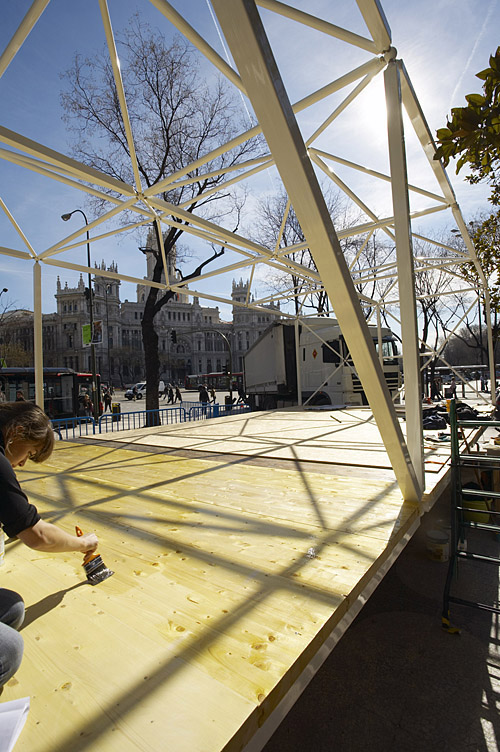
Photo, Alfonso Herranz.

Photo, Alfonso Herranz.

Photo, Alfonso Herranz.




Install reversible apartments on the roof terrace of your building
One way of generating rental apartments without land costs
Free advice and construction services:
- Within the trend, with a marked historical tradition, of raising constructions on roof and ordinary terraces that are generally used to make extensions to existing apartments, consolidate a new one or build storage rooms, the installation of one such construction is proposed with the aim of providing a solution to the access to housing problem of Mr./Mrs...
Since 2000, the architect, Santiago Cirugeda, editor of the proposal, has been responsible for several self-constructions on roofs, which have given way to good relations between neighbours, injected money to finance repairs to the common elements of the buildings and enabled persons on low incomes to access housing.
Note: see ‘alquiler de azoteas' in
www.youtube.com











Community of co-proprietors of the building located in No.
INTERNAL REGIME AGREEMENT
The community of co-proprietors of the building located in no. of the street, ..............................., hereby represented by: (provide list)
Mr.
Mr.
Mr.
Mr.
Mrs.
Mrs.
hereafter, the community, gathered with:
Mr. ,hereafter, the new tenant, and
Mr. Santiago Cirugeda, hereafter, the architect, sign this agreement.
FIRST
The community will allow the new tenant to install a reversible apartment on the roof of the attic. The apartment will be built with non-masonry material and in accordance with the project of the architect, Santiago Cirugeda, who makes himself responsible for the stability of the apartment and of the roof terrace on which the apartment is to be installed.
The construction will be similar to the rest of the apartment extensions and storage rooms that can be seen in many neighbouring buildings. In this case, in accordance with municipal law, the construction shall not exceed 30% of the area where it is to be installed.
SECOND
The assembly costs will be met by the new tenant and, as far as possible, he shall avoid causing any inconvenience when carrying the material up on to the roof. The assembly, which does not require the use of noisy machinery, will be carried out during working hours and weekends.
THIRD
For the use of the roof, the new tenant shall pay a monthly rental of 200 euros for a period of 5 years, which shall be used in benefit of the community. Likewise, the new tenant shall pay the community charges in force during the period in which the apartment remains in place.
FOURTH
The electricity connection and hook-up to down pipes and the water supply will be carried out through the apartment located in the attic. The rental agreement to justify the payment of the community charges and the registration of the new tenant in the local council can be formalised with the proprietor of the attic apartment.
FIFTH
The apartment shall not be transferred through a sale contract. The use of the apartment is strictly reserved for the above-mentioned tenant and his partner. The coexistence regime shall be the same as the one applicable to the rest of the tenants, with special emphasis on respecting rest times and good coexistence practices between the neighbours.
SIXTH
The cost of any building work carried out to facilitate access to the roof terrace, as well as any possible damage caused to the roof terrace, will be met by the new tenant.
SEVENTH
Any requirement from the public authorities for the purpose of formalising and establishing the legality of the apartment shall be met under the responsibility of the architect.
Madrid 2007
Signed: The representatives of the community
Mr. Mr.
Mr. Mr.
Mrs. Mrs.
Signed: New tenant. Signed: Santiago Cirugeda. Architect.